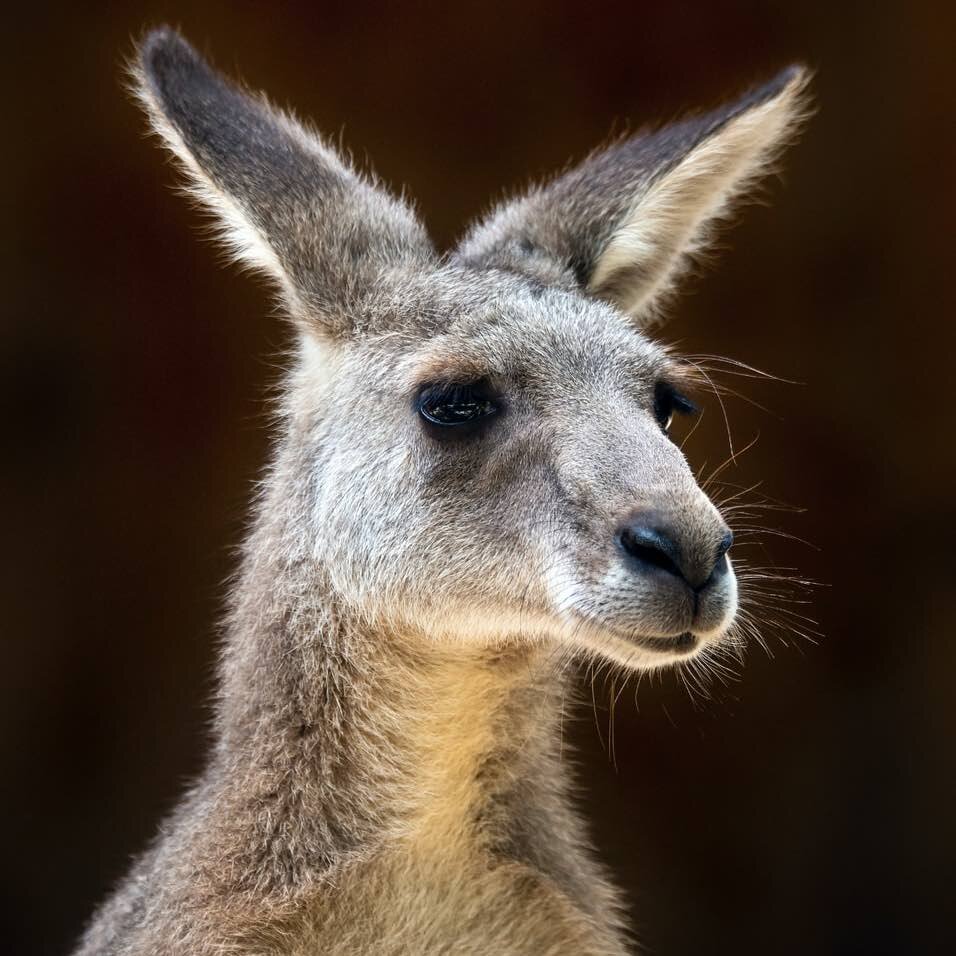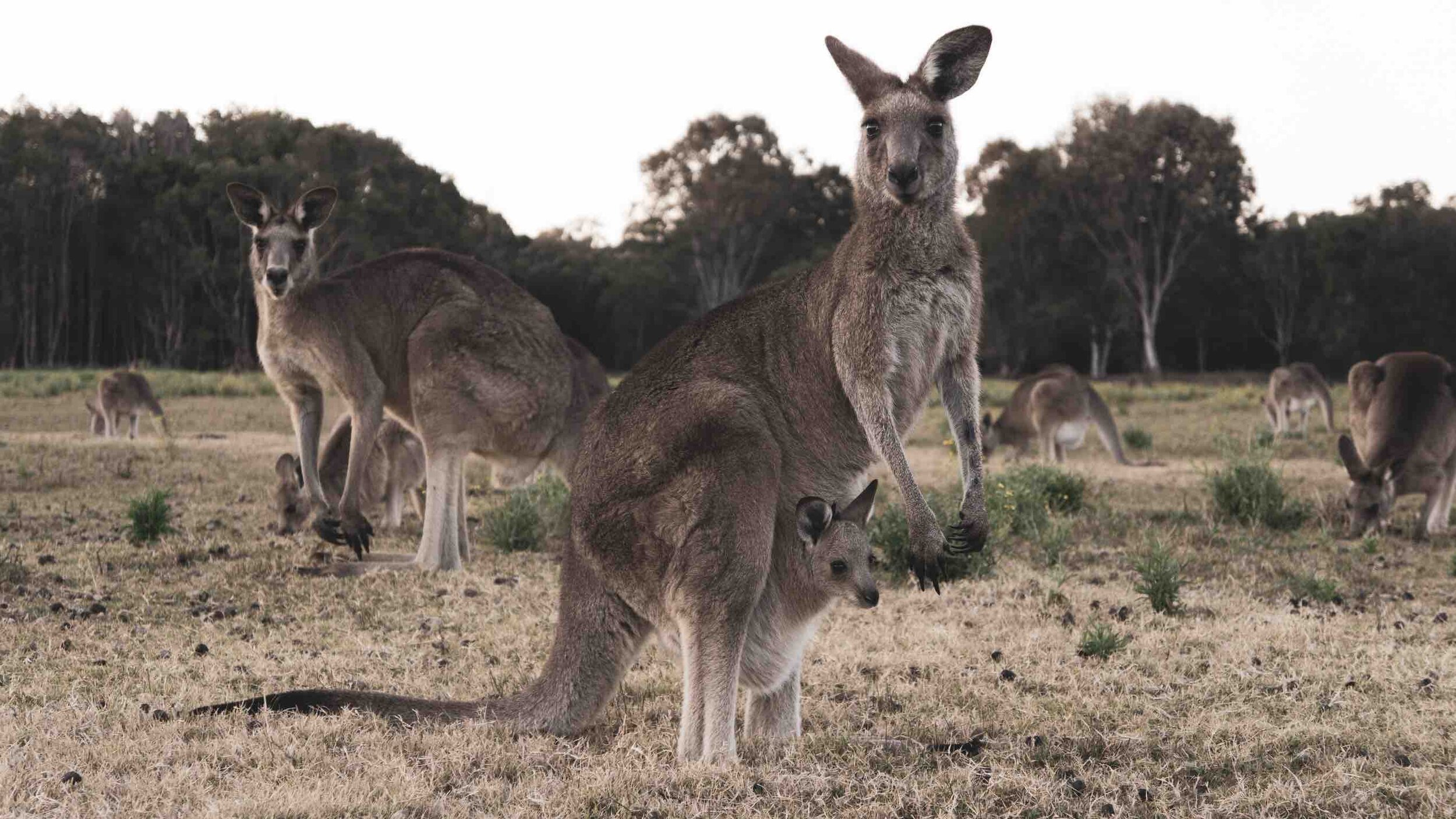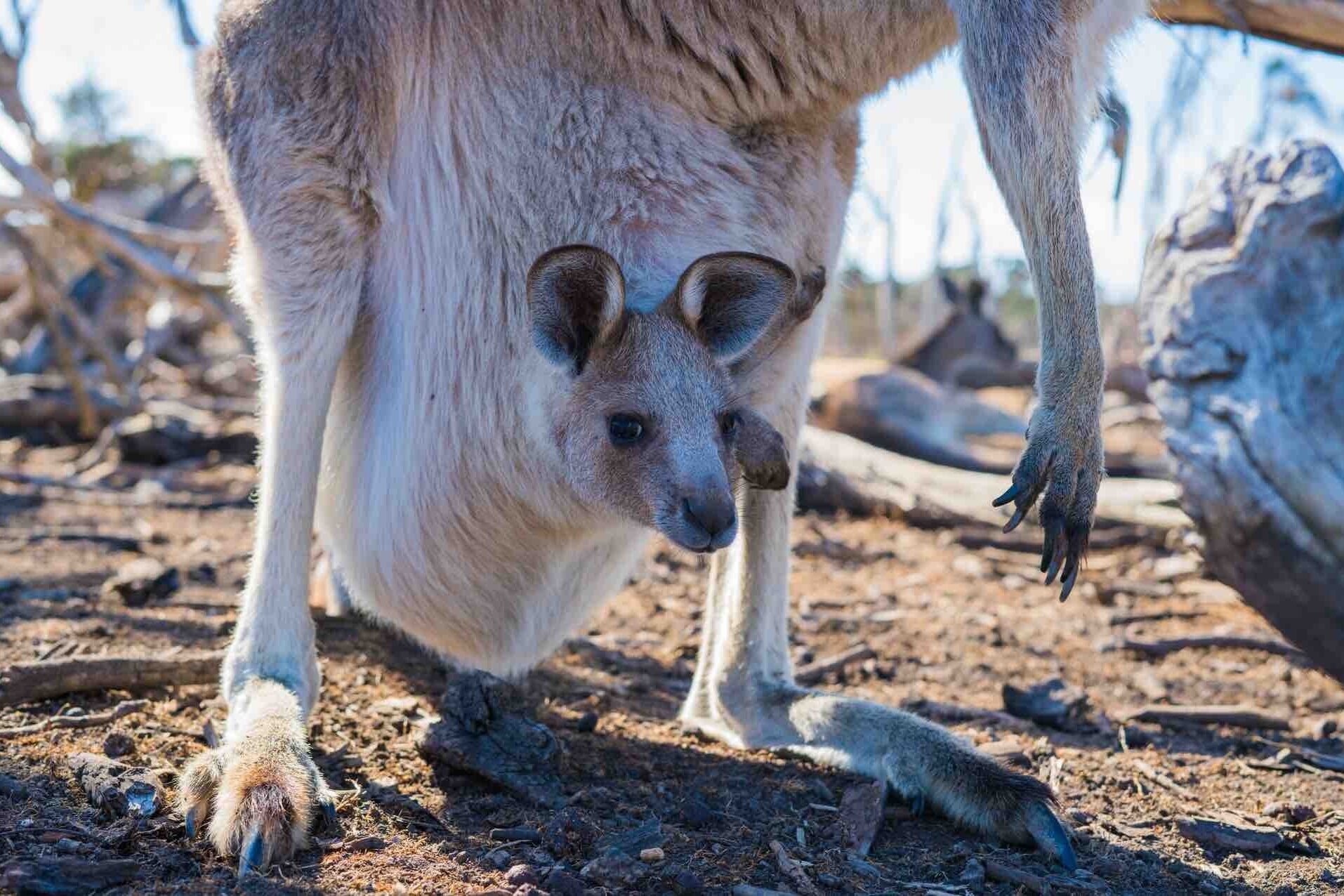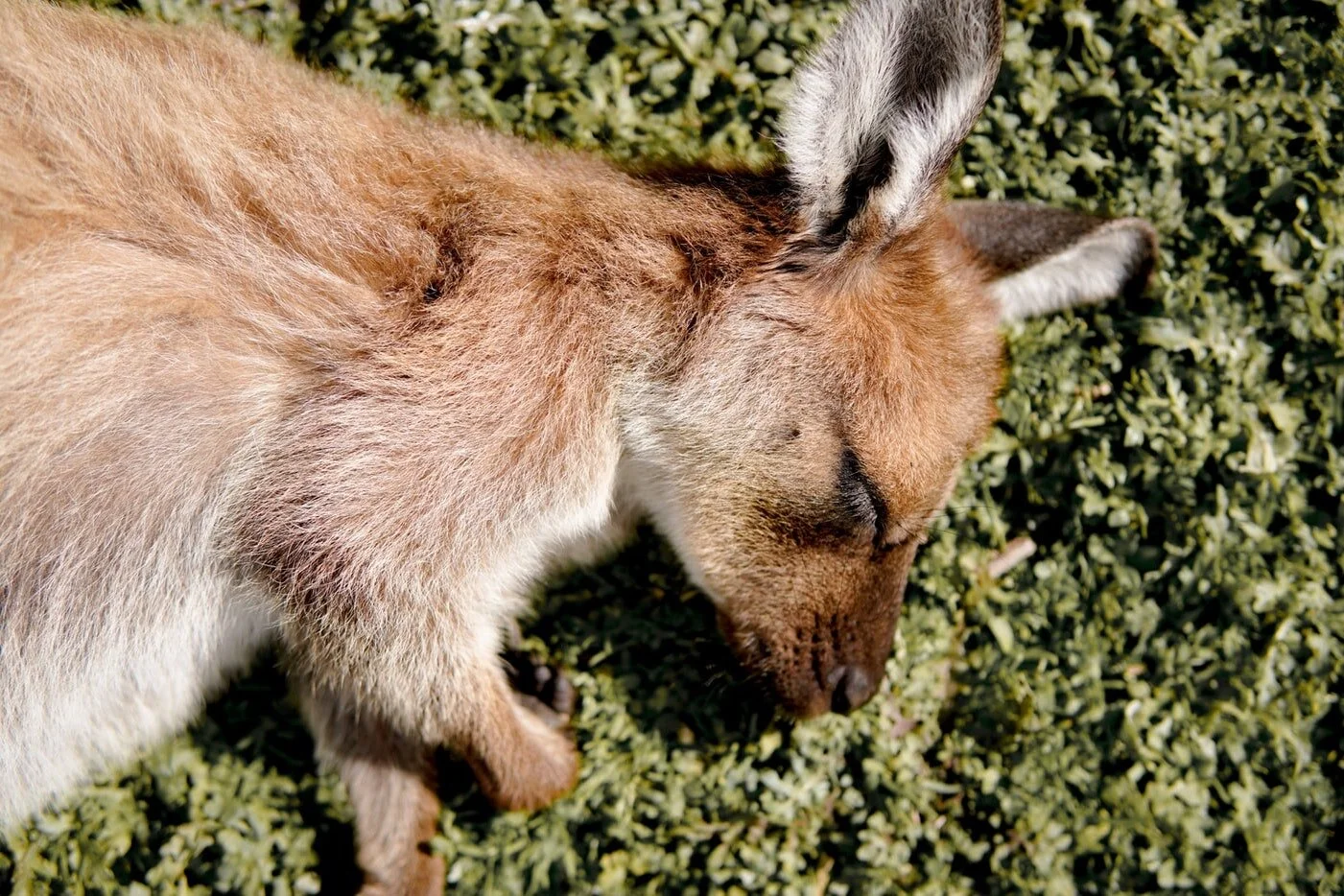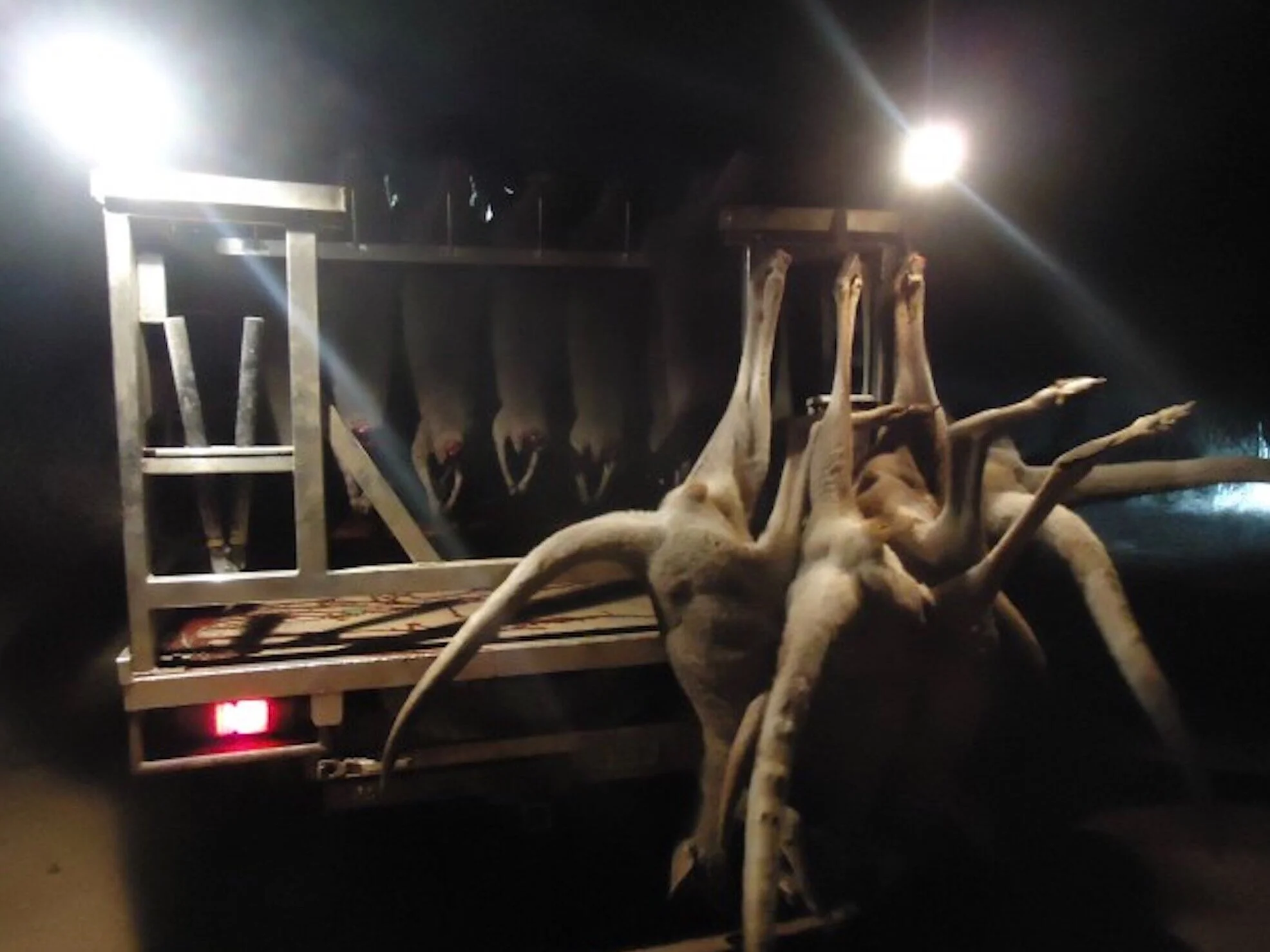Issues in the kangaroo skin leather supply chain
Kangaroos are brutally hunted and killed in a poorly regulated industry, on their native land, for the sake of fashion.
Kangaroo skin has been used for many years by the fashion industry, but particularly in the creation of sports shoes. As years go by, more designers are using kangaroo skin to produce their leather products, claiming that it is a more ‘ethical’ and ‘sustainable’ material. However, these claims are far from truthful.
The iconic Australian kangaroo is sensitive, social and smart. It’s also at risk.
Social, slow-breeding animals
There are many species of kangaroo - some are red, some are grey, some are small and live in trees, some are very large. The kangaroo is recognised and admired around the world.
Kangaroos are very social, living in familiar mobs that are quite large, if not impacted by shooting. Kangaroos run matriarchal ‘societies’, with females (does) staying with their bloodline for their entire lives.
Once joeys – baby kangaroos – are born, they climb into their mothers’ pouches, where they stay for up to eleven months before they begin to move between the outside world and their pouch. Kangaroos are caring mothers, who feed their young until they are up to 18 months old, well after joeys have left their pouches.
‘Kangaroos are slow-growing species with low reproductive rates and high juvenile mortality.’ - Kangaroos at Risk
Juvenile mortality
Kangaroos are intuitive breeders, and do not birth young in drought conditions to ensure there is enough grass and food for existing kangaroos. In intense drought, kangaroos lose their pregnancies, and kangaroo numbers are known to decline by up to 65%. Between 2019 to 2020, drought caused a population decline of 4 million kangaroos (25%) in New South Wales.
The average kangaroo doe’s fertile life is about 8 years, and her first likely-to-be ‘successful’ joey is often weaned when she is around 4 years old. With 73% juvenile mortality, a kangaroo doe will birth two to three surviving kangaroos in her life time, if that.
Balanced and healthy kangaroo populations are supported by the elimination of lethal control of all wildlife. The natural apex predator of kangaroos is the native dingo, a species who is is also killed for fashion industry profits.
Other risks for kangaroos
In 2018, almost 8,000 car collision claims were made to AAMI Insurance regarding kangaroos. It is common to see dead kangaroos on the side of country roads.
During bushfire season, many kangaroos perish, too. In the 2019-20 bushfires, a staggering 5 million kangaroos and wallabies burned and died.
The government estimates there are about 34 million kangaroos across Australia, a decline of 23% between 2019 and 2020.
Kangaroos are threatened by habitat loss due to animal agriculture, which requires large amounts of cleared land, grazed on by non-native animals.
The greatest risk to kangaroos, however, are humans and guns.
Image: ABC News: James Carmody
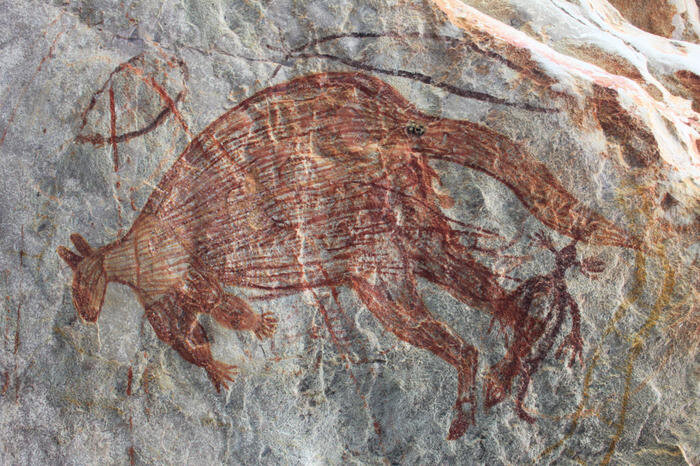
Kangaroos have lived on the same land for 20 million years – far longer than any white person in the country. The country ‘Australia’ has only existed under British colonisation for a few hundred years, and since colonisation in New South Wales, kangaroo populations have declined by as much as an estimated 90%.
Since 2000, 42% of identified kangaroo populations in parts of tropical Queensland have undergone an overall decline in abundance, according to the CSIRO.
Yet, the Australian Government and agricultural industry treat them as ‘pests’ and ‘a plague’, offering licenses to kill them.
Image: Aboriginal art on rocks date back up to over 17,000 years / Macquarie University
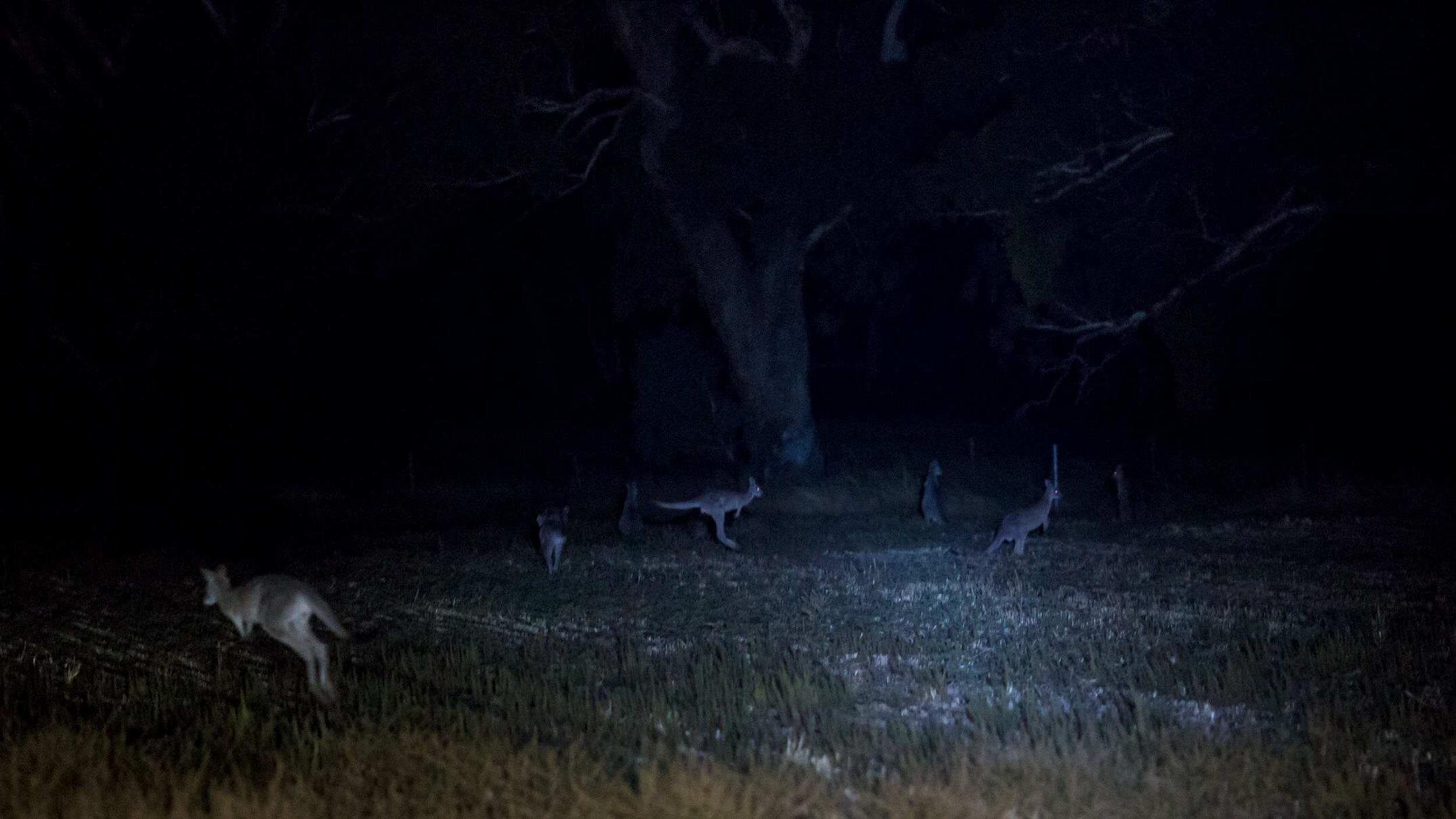
Across their native grasslands, 31.5 million kangaroos have been brutally killed over the last decade.
This is the largest commercial slaughter of land-dwelling wildlife in the world.
Image: ABC News: Jane Cowan
Each year, state governments set quotas of how many kangaroos can be killed and claim that the quotes are sustainable.
However, scientists dispute this claim.
Based on false claims that kangaroos breed out of control, damage the environment and become a ‘plague’,
these killings take place across the country, bringing in up to $90 million Australian dollars annually.
Shooting accuracy
Kangaroos are shot and killed at night in rural locations, and monitoring or policing is non-existent. A Code of Practice outlines how kangaroos ‘should’ be shot, but the Code isn’t enforced and there is no way of telling if the Code is breached.
Conservative estimates suggest that up to 94,000 kangaroos are not killed and ‘processed’ as is outlined in the Code. Other reports state that up to 40% are neck shot, causing immense pain rather than instant death. Examination of decapitated heads removed after killing often show no bullet wounds, suggesting death by secondary trauma. Even an ex-kangaroo shooter supported these findings, stating that the industry is cruel, inhumane and 100% unchecked.
Killing joeys
A Shot in the Dark - a report on kangaroo harvesting, prepared by a wildlife ecologist, found that, every year, some ‘440,000 dependent young kangaroos are either clubbed to death or left to starve after their mothers are killed’.
The Australian Government recommends that joeys are killed by blunt force trauma. The Code advises how to bludgeon a joey to death:
“… hold the young firmly by the hindquarters (around the top of the back legs and base of tail) and then swing firmly and quickly in an arc so that the rear of the joey’s head is hit against a large solid surface that will not move or compress during the impact (e.g. the tray of a utility vehicle).”
The cruelty you see in this video is not only legal, but recommended:
Video: Viva! campaign
Regardless of how kangaroos are killed, this industry is unjust. Kangaroos are sentient beings. They are no more a ‘resource’ than they are a ‘pest’. They are non-human animals who live in harmony with the environment, in their own right – not for the sake of humans.
Image: Rescued joeys drinking milk // Wild Paws Rescue
Killing native animals for commercial gain has historically never been sustainable.
Saltwater crocodiles neared extinction in the 1960s due to colonial hunting led primarily by the sale of their skins. Koalas were extinct in one state and nearly extinct in others by 1924 due to the koala fur trade, which was ended by the late 1930s when koalas gained some protection.
Six species in the kangaroo family have already become extinct since European colonisation. Many species are endangered today, including the brush-tailed rock-wallaby, which was killed in the hundreds of thousands for the sake of fur-wearing.
Extinction for the sake of fashion is unacceptable. While the way we slaughter wild animals has changed and become more methodical, in its essence it is the same.
Native animals belong to the land they are home in, not to the fashion industry.
Image: Kangaroo hunting. No. 3, The death by S.T Gill in 1858. / National Library of Australia
As indigenous animals, kangaroos benefit biodiversity.
Biodiversity benefits of natural kangaroo populations
Kangaroos rarely overgraze a particular area, leaving grass cover and habitat to support other plants and animals. Their teeth bite grass trips, and do not rip out grass like cattle do.
Kangaroos play an important role in vegetation diversity and bushfire prevention. They even improve the health and plant diversity of urban reserves, according to a CSIRO report.
We know that farming animals causes land degradation and biodiversity loss, and that we need to reduce the damage caused by almost one million sheep and cattle. We often hear about the importance of animals in regenerating land, too. This begs the question - why slaughter native grazers?
Cleared land is the environmental harm, not native animals
Almost half of Australia’s once biodiverse total land mass is now used for animal production, mostly cattle and sheep rearing.
Yet, a powerful, industry-led minority claim kangaroos are the biodiversity problem.
Kangaroos eat far less grass than sheep and cattle raised for skins and wool, with most environmental damage in the country due to industry grazing.
Image: Tim Laman / WWF / Land clearing in Australia for animal farming.
Kangaroo leather is even less sustainable than synthetics
An article in favour of the use of kangaroo leather rather than cow leather states: ‘Kangaroos eat the grass leaving a small portion to re-flourish, they bounce across the land without causing damage to it, and don’t produce methane gases.’
These environmental benefits are not excuses to use and wear kangaroo skin; they are further reasons kangaroos should be protected.
Even synthetic polyurethane leather is better for the environment, causing an even lesser impact to produce than kangaroo - and all other animal skin leathers.
Image: Collective Fashion Justice graph using Higg MSI data
Kangaroos are also sacred to some Aboriginal communities.
In the film, Kangaroo: A Love Hate Story, Uncle Max Dulumunmun Harrison, a Yulin Elder and First Nation man, says, ‘kangaroos have been here for millions of years. This is their land, they are the first Australians.’
Kangaroos were eating the same grasses the British wanted their sheep to grow fat on, so kangaroos were shot. But these magnificent animals are hard to dominate. Kangaroos move in an amazing way, both because it is unique and energetically efficient.
Unable to be ‘controlled’, instead they have been vilified, labelled ‘pests’, and now, also ‘resources’.
Here, you can watch Parra Waripa perform a song in his language about red kangaroos.
“Since Invasion these sacred totem animals have been indiscriminately gunned down… [those engaging in this industry] are not just environmental vandals but they are engaging in the very same genocide upon kangaroos that was instigated upon we Indigenous people, the thylacine and indeed the koala. This is their and my ancestral home.”
“How long have those kangaroos been hopping on this land? They are not intruding… it is humans invading the kangaroos’ space and it is the kangaroo that is being disregarded. My people have lived beside the kangaroo for thousands of years and we never considered them as a pest. So why do people want to control these wonderful animals?”
A potential ban on the use of kangaroo skin and flesh in the United States is being considered by Congress, and while the industry states that kangaroo skins are simply by-products of the ‘harvest’, they also state that a ban on the use of skins for boots in the US could ‘destroy the industry’.
This concern for economic loss indicates that these are indeed valuable skins, and that kangaroos are shot and killed for financial gain brought about by the selling of their flesh and skins.
‘… described the trade in skins as the backbone of the [kangaroo shooting] industry, and it remains so.’
- From the Australian Government
For a period, the import of kangaroo bodies to Russia was banned due to ‘unacceptable levels of E.coli’.
Transporting dead kangaroos
Kangaroos are wild animals, who are shot and partially butchered in the bush at night. Governments acknowledge three main risks of taking flesh from killed kangaroos: bacterial contamination, physical contamination and cross contamination. The same governments rely on shooters to follow guidelines, which are never policed or monitored.
Kangaroos are transported on the backs of open-air trucks, gathering dust, faeces and flies. Current laws allow kangaroos to be kept in rural chillers for up to 14 days before being transported to processors. Chillers have been documented as contaminated with old blood, rusty hooks, dirt and live animals.
High levels of salmonella, E.coli and other contaminates have been recorded in exported kangaroo meat and on their skins.
Additional references: Kangaroos At Risk
Image: People Against Killing Kangaroos
Zoonotic disease risks
COVID-19 has taught that killing, eating and wearing non-human animals can cause extreme risks of zoonotic disease outbreaks, which impact humans.
Governments acknowledge that people who shoot, butcher and skin kangaroos are at risk of serious health issues from handling kangaroo carcasses.
Pathogens can spread throughout human communities if shooters fail to properly clean their vehicles, equipment, clothing and hands. Zoonotic diseases pose a risk to everyone, which leaves the fashion industry with a responsibility to use safer materials.
Additional references: Kangaroos At Risk
Image: Salmonella

With plenty of total ethics materials
to wear, there is no reason for the fashion industry to sell sentient, native animal skins.
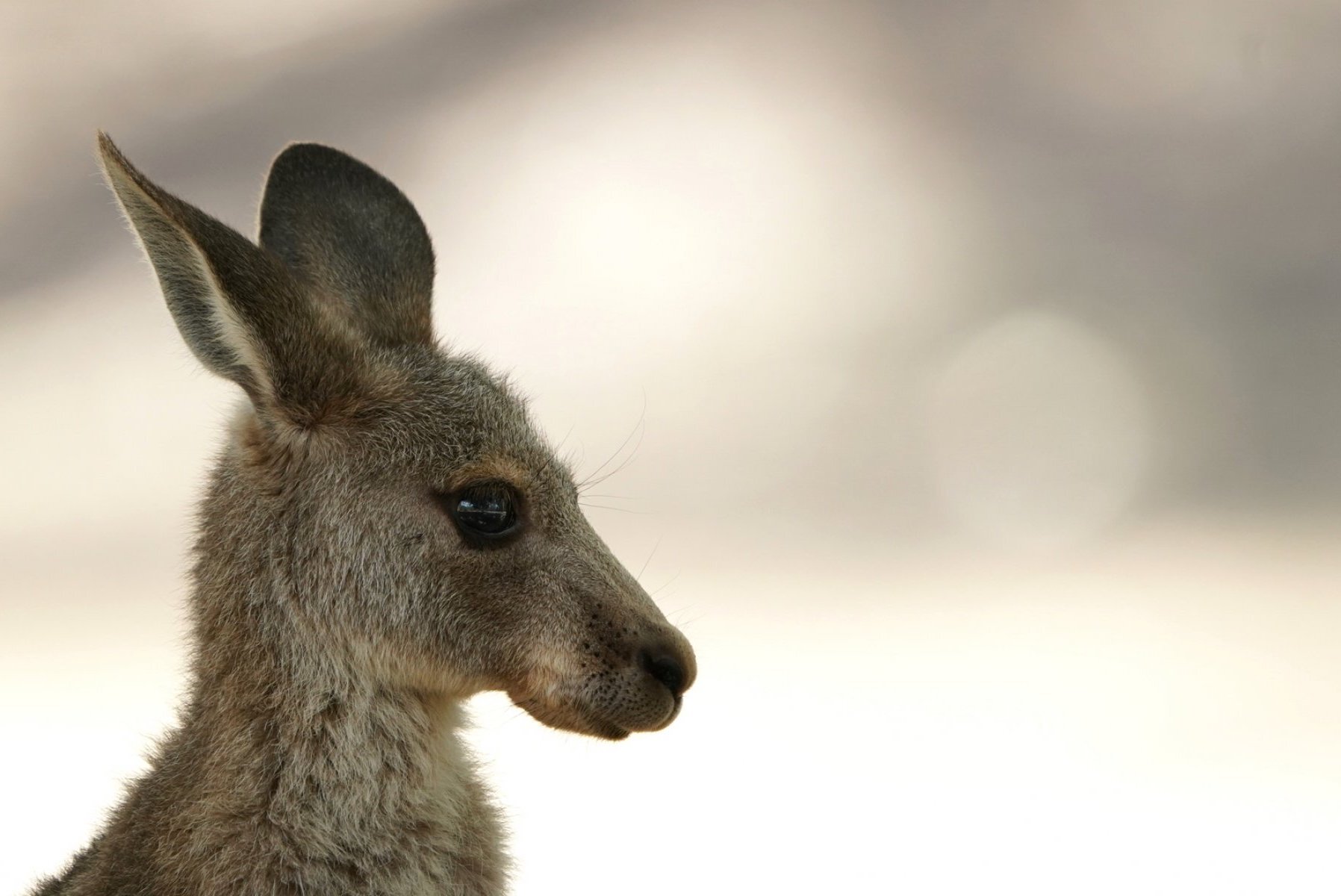
Help end this cruel industry by signing in support of an EU ban on kangaroo product sales.
Image: Gav Wheatley via Farm Transparency Project
Want to keep learning?
-

Is vegetable tanned leather sustainable?
Vegetable tanned leather is positioned as more eco-friendly than chrome tanned and synthetic leather. But is it true?
-
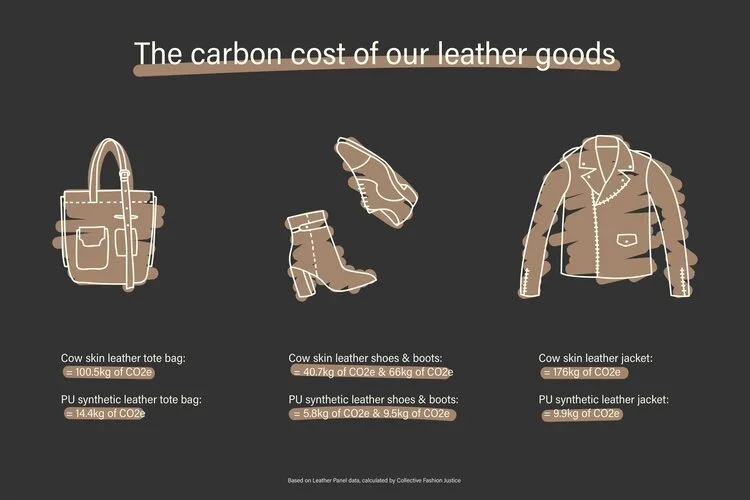
Carbon cost of leather goods
Calculations of carbon and cow skin leather products shows us that a care for environmental wellbeing is not aligned with leather production.
-
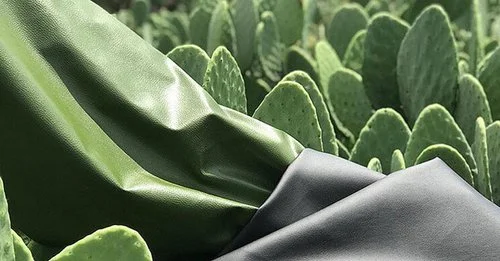
Cactus leather creators release material life cycle assessment
The creators of cactus leather, Desserto, have recently released an early stage life cycle assessment.

